|
|
Home →
Survival →
Fire →
Tinder →
Tinder Fungus
True Tinder Fungus
|
|
Tinder Fungus is a type of fungus that holds a coal very well for a
long period of time, and ignites easily. Actually, there are two types: "True"
Tinder Fungus and False
Tinder Fungus.
|
|
|
|
"True" Tinder Fungus
(often called simply "Tinder Fungus" or Chaga - Inonotus
obliquus) grows on live birch
trees and looks like a blotch of blackened wood. It is rather hard. It
resembles black bark that has peeled away slightly from the tree and
thickened. The part that you use is inside the blackened outer layer, the
red-brown material. It crumbles readily, so you can use it as part of
tinder when making fire (or in a fire piston), or keep it in a whole piece
for carrying a coal.
|
|
|
|
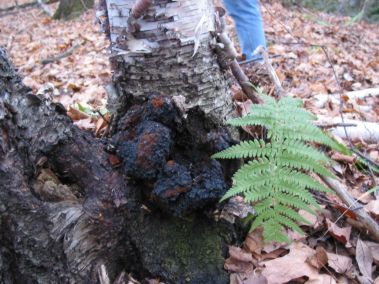
|
Here is a nice big chunk of Tinder
Fungus at the base of a live birch tree.
|
|
|
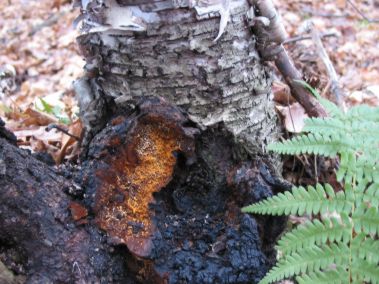
|
This picture shows the Tinder
Fungus cut open to reveal the red-brown interior
|
|
|
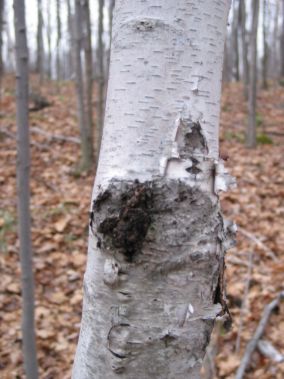
|
Here's a small
Tinder Fungus growing farther up a live birch tree.
Note how it looks like a chunk of thick,
blackened, chunky bark. |
|
|
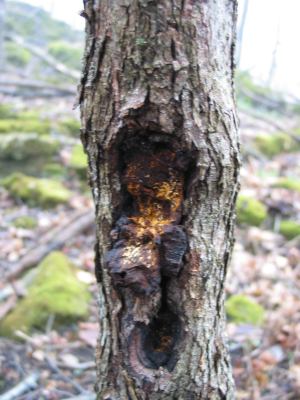
|
Tinder Fungus sometimes
(rarely) grows on trees other than birch.
Here's a picture of it growing on a Hop Hornbeam
tree (Ironwood).
|
|
|
|
|
Here's a larger one. The left picture is a
closeup of the fungus. The right picture shows it growing on the birch
tree.
|
|
|
|
|
|
|
|
|
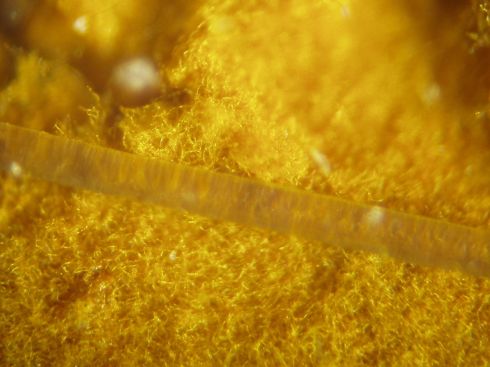
Photo by
Rob Bicevskis
|
This photo, taken through a
microscope, shows a human hair overlaid on a piece of tinder
fungus.
From the photo
it is pretty clear why tinder fungus works so well!
|
|
|
|
|
|
|
|
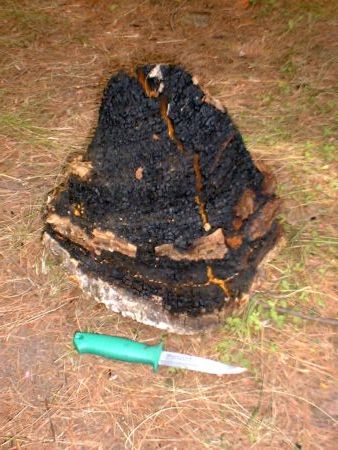
Photo by Rob Bicevskis
|
From Rob Bicevskis... Here are a couple pictures of the
largest tinder fungus I ever came across.
The shape was like a volcano on its side.
Sap was dripping through the "mouth" of the "volcano."
|
|
|
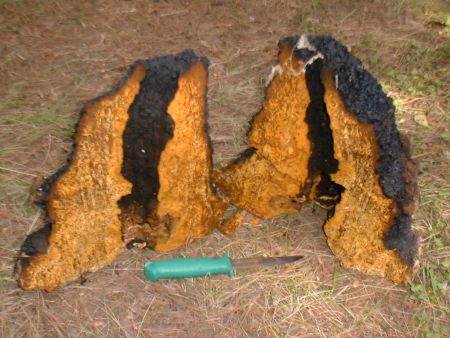
Photo by
Rob Bicevskis
|
From observation, it seems that tinder fungus usually grows at some
injury site on a tree.
In the case of this huge example, it seems like there was a steady
stream of sap - which was able to feed and grow a huge fungus. |
|
|
|
While on the topic, there seems to be some debate as to how to prepare
tinder fungus.
I have read in places that it doesn't work very well when dried.
My limited experience has shown that if the fungus is dried too quickly it is less effective.
Drying in an oven turns out a particularly bad product.
For this large fungus, I cut it up into pieces which were then placed
into a pillow case. The pillow case was kept out of the sun, but did
have a bit of airflow.
The trick is to dry slowly, but not so slowly that molds start to
appear. The dried fungus works very well. |
|
|
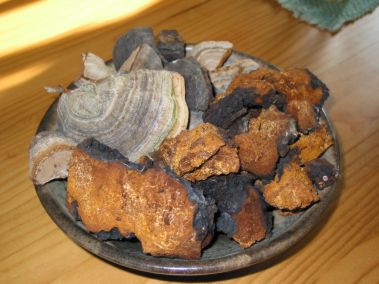
|
Well, not exactly a
primitive living picture! But it shows the two types of Tinder
Fungus.
The False Tinder Fungus is the stripy one
on the left, and there's a small one underneath it, and some more
small ones to the rear. The Tinder Funguses are the red-brown
chunks with black on one side.
Leaving stuff out like this is also a good
reminder of primitive skills, Nature, the Earth, and the like.
...You come home from work, all stressed out from working in an
office or on a machine all day, walk in, throw something together
for supper, sit down to eat, and see the bowl of Tinder Fungus (or
whatever). "Oh yeah, that's what's real, that's what it's all
about".
|
|
|
Both of these funguses are fairly aromatic when burning, and are said
to have medicinal properties. Tinder Fungus smells nicer that False Tinder
Fungus. They could be used as incense!
Wikipedia page about True Tinder Fungus:
en.wikipedia.org/wiki/Inonotus_obliquus
|
|
|
|
|